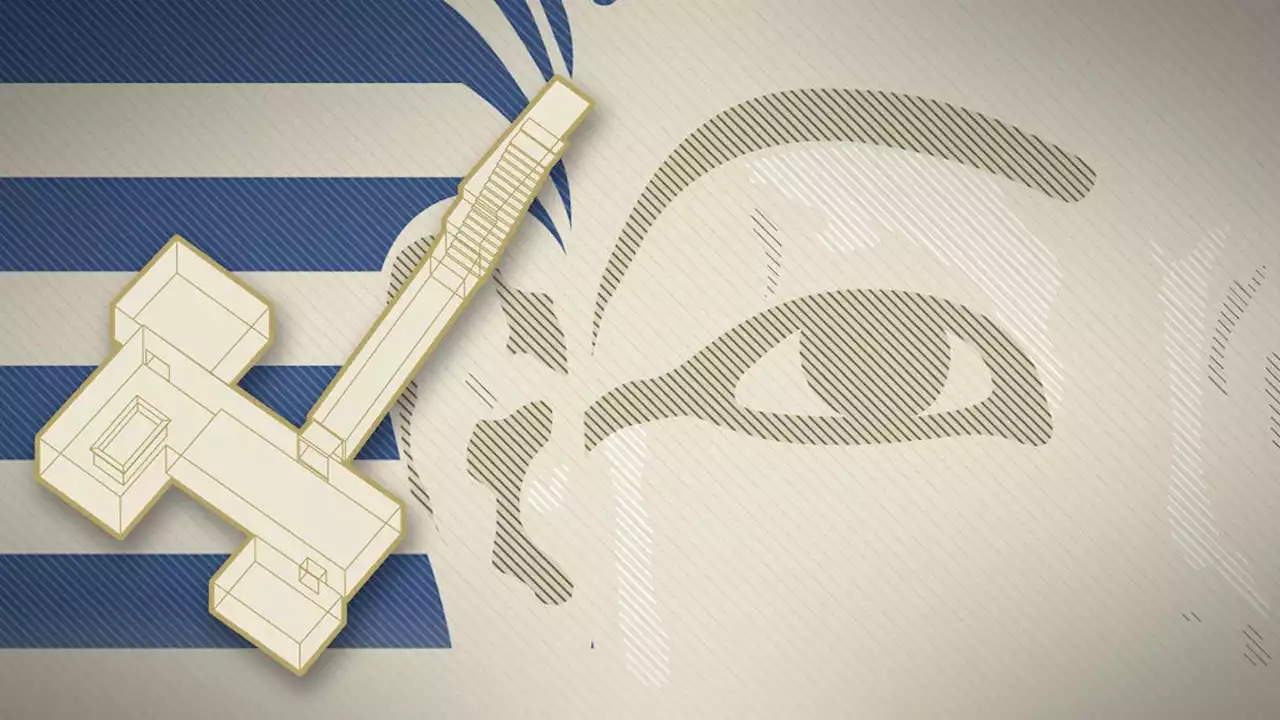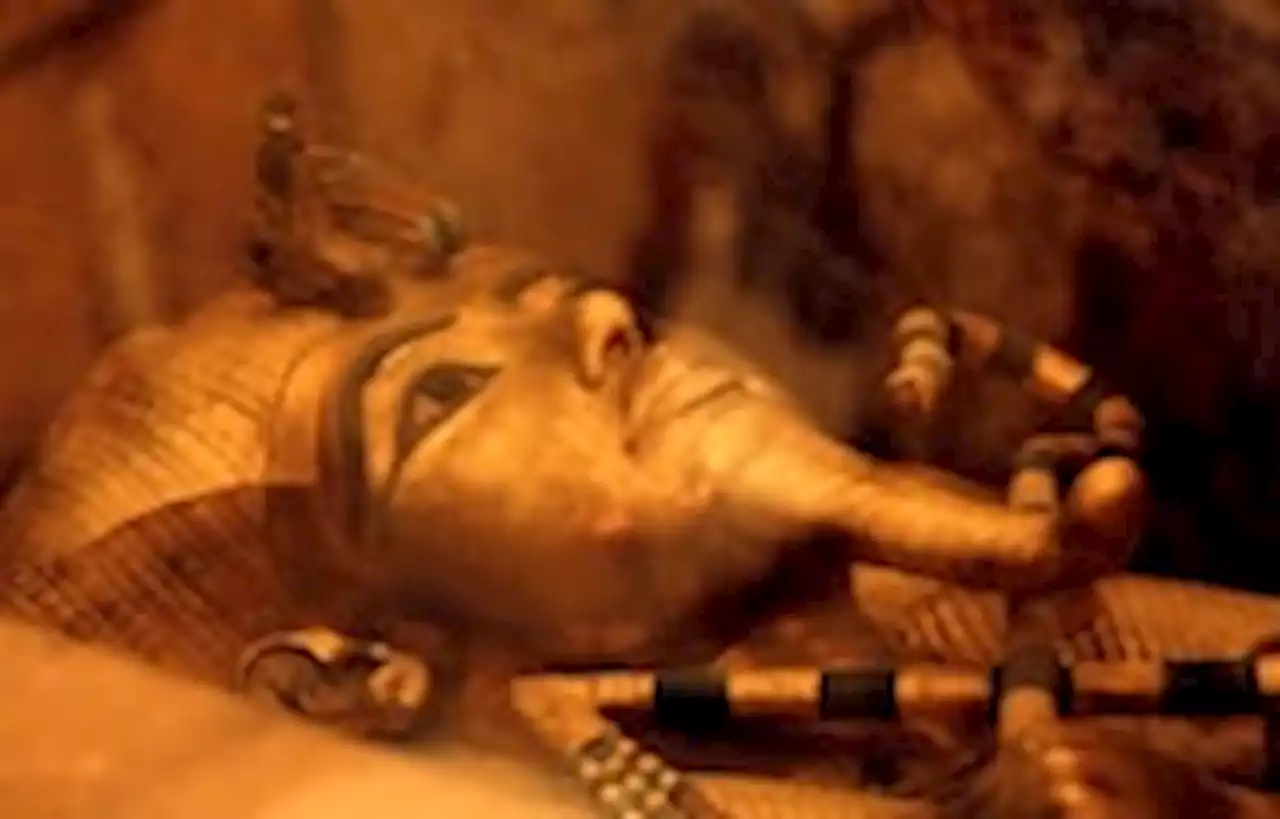After King Tut's tomb was found in Egypt in 1922, word spread of a curse plaguing—and sometimes killing—those who entered it. Science has another explanation.
“Yes, wonderful things,” he replied, according to his book “The Discovery of the Tomb of Tutankhamen,” written with Arthur Cruttenden Mace in 1923. Suddenly, the world became transfixed on a little-known pharaoh of the 18th Dynasty as gold, jewelry and other fantastic treasures saw the light of day for the first time in more than 3,000 years.
But was there really a curse? Some studies suggest a more mundane explanation: mold found on mummies and in the air at burial sites in Egypt. No curse was ever found written in hieroglyphics at the tomb of Tutankhamen, the Egyptian king who died at 18 or 19, around 1323 B.C. His father is thought to have been the pharaoh Akhenaten, while his mother was his father’s sister, according to DNA testing. King Tut had a club foot and scoliosis, possibly caused by the tradition of incest among the royal family.
Piling on was Sir Arthur Conan Doyle, creator of the popular Sherlock Holmes stories. Upon learning of his friend’s death, Doyle, a known spiritualist, told a reporter, “An evil elemental may have caused Lord Carnarvon’s fatal illness.
United States Latest News, United States Headlines
Similar News:You can also read news stories similar to this one that we have collected from other news sources.
 'Beyond King Tut' exhibit gives immersive look at ancient EgyptHistory buffs will be able to get their love of Egyptian pharaohs with the all-new, immersive King Tut exhibit in New York City.
'Beyond King Tut' exhibit gives immersive look at ancient EgyptHistory buffs will be able to get their love of Egyptian pharaohs with the all-new, immersive King Tut exhibit in New York City.
Read more »
 'Beyond King Tut' exhibit gives immersive look at ancient EgyptHistory buffs will be able to get their love of Egyptian pharaohs with the all-new, immersive King Tut exhibit in New York City.
'Beyond King Tut' exhibit gives immersive look at ancient EgyptHistory buffs will be able to get their love of Egyptian pharaohs with the all-new, immersive King Tut exhibit in New York City.
Read more »
 'Beyond King Tut' exhibit gives immersive look at ancient EgyptHistory buffs will be able to get their love of Egyptian pharaohs with the all-new, immersive King Tut exhibit in New York City.
'Beyond King Tut' exhibit gives immersive look at ancient EgyptHistory buffs will be able to get their love of Egyptian pharaohs with the all-new, immersive King Tut exhibit in New York City.
Read more »
 We Celebrate King Tut, But He Was Once Erased From Ancient Egyptian HistoryArchaeologists found King Tut's tomb on November 4, 1922. As we celebrate this anniversary, we also now know that King Tut was largely forgotten by his own subjects.
We Celebrate King Tut, But He Was Once Erased From Ancient Egyptian HistoryArchaeologists found King Tut's tomb on November 4, 1922. As we celebrate this anniversary, we also now know that King Tut was largely forgotten by his own subjects.
Read more »
 What did King Tut look like?Egyptologists studying King Tutankhamun are piecing together what he may have looked like based on the remains of his mummy, personal artifacts, pharaoh portraits and figurines of his likeness.
What did King Tut look like?Egyptologists studying King Tutankhamun are piecing together what he may have looked like based on the remains of his mummy, personal artifacts, pharaoh portraits and figurines of his likeness.
Read more »
 An ancient treasure trove: Looking back at the King Tut tomb discovery 100 years laterIt's been 100 years since the discovery of King Tut's tomb. More than 5,000 artifacts – including furniture, jewelry, toys, food and his iconic mask – have be removed from the densely packed tomb and catalogued.
An ancient treasure trove: Looking back at the King Tut tomb discovery 100 years laterIt's been 100 years since the discovery of King Tut's tomb. More than 5,000 artifacts – including furniture, jewelry, toys, food and his iconic mask – have be removed from the densely packed tomb and catalogued.
Read more »
